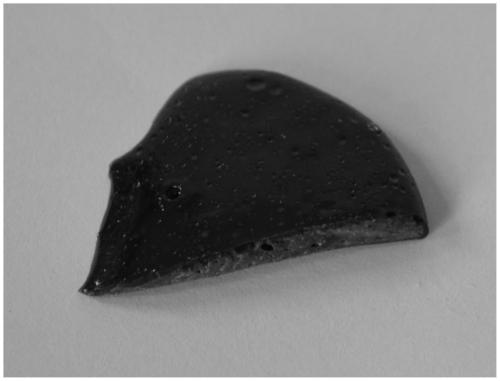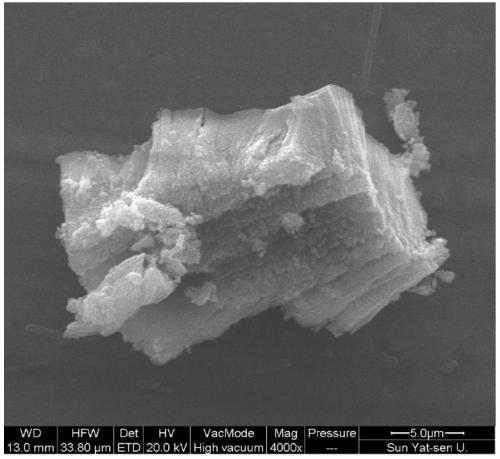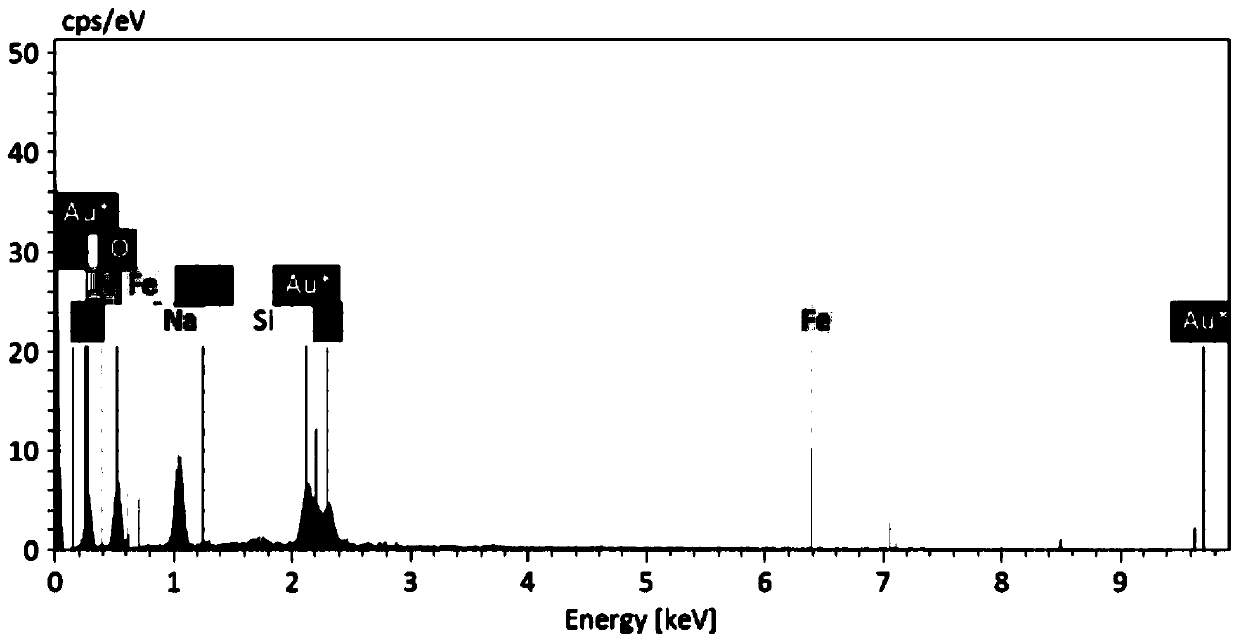Hydrogel nano composite material as well as preparation method and application thereof
A nano-composite material and hydrogel nano-technology, applied in the direction of chemical instruments and methods, water pollutants, alkali metal compounds, etc., can solve the problems of easy agglomeration of materials, secondary pollution, etc., to avoid pollution, reduce environmental load, The effect of reducing environmental pollution
- Summary
- Abstract
- Description
- Claims
- Application Information
AI Technical Summary
Problems solved by technology
Method used
Image
Examples
Embodiment 1
[0043] (1) Take 1g of lignin, 0.5g of acrylamide, 0.1g of maleic anhydride, 0.01g of cross-linking agent N,N'-methylenebisacrylamide and 0.5g of ferric chloride, add 20mL of deionized water, Dissolve completely with magnetic stirring.
[0044] (2) Add 2 mL of ammonia water (concentration: 25%) to the solution obtained in step (1) to adjust the pH to alkaline. 0.01 g of potassium persulfate was added as an initiator. Subsequently, 10 μL of tetramethylethylenediamine was added, stirred thoroughly and left to stand for 1 h to obtain a composite hydrogel.
[0045] (3) Soak the composite hydrogel obtained in (2) in 0.1mol / L sodium sulfide solution for 6 hours to obtain a black hydrogel, wash it with deionized water several times, and put it in the refrigerator for 12 hours at -10°C , freeze-dried for 12 hours, the heavy metal-removed hydrogel nanocomposite can be obtained.
[0046] figure 1 The physical picture of the hydrogel nanocomposite material prepared in this embodiment ...
Embodiment 2
[0048] (1) Take 10g of lignin, 1.5g of acrylamide, 0.5g of maleic anhydride, 0.015g of cross-linking agent N,N'-methylenebisacrylamide and 5g of ferrous chloride, add 100mL of deionized water, Dissolve completely with magnetic stirring.
[0049] (2) Add 10 mL of 10% potassium hydroxide to the solution obtained in step (1) to adjust the pH to alkaline. 0.03 g of potassium persulfate was added as an initiator. Subsequently, 40 μL of tetramethylethylenediamine was added, stirred thoroughly and left to stand for 5 h to obtain a composite hydrogel.
[0050] (3) Soak the composite hydrogel obtained in step (2) in 0.5 mol / L sodium sulfide solution for 24 hours to obtain a black hydrogel, wash it several times with deionized water, and put it in the refrigerator for 2 hours at -20°C Afterwards, freeze-dry for 24 hours to obtain a hydrogel nanocomposite material with heavy metals removed.
Embodiment 3
[0052] (1) Take 5g of lignin, 1g of acrylamide, 0.3g of maleic anhydride, 0.012g of cross-linking agent N,N'-methylenebisacrylamide and 2g of ferrous sulfate, add 50mL of deionized water, and stir magnetically Dissolve completely.
[0053] (2) Add 5 mL of 10% sodium hydroxide to the solution obtained in step (1) to adjust the pH to alkaline. 0.02 g of potassium persulfate was added as an initiator. Subsequently, 20 μL of tetramethylethylenediamine was added, stirred thoroughly and left to stand for 3 h to obtain a composite hydrogel.
[0054] (3) Soak the composite hydrogel obtained in step (2) in 0.3mol / L sodium sulfide solution for 12 hours to obtain a black hydrogel, wash it several times with deionized water, and put it in the refrigerator for 6 hours at -15°C Afterwards, freeze-dry for 18 hours to obtain a hydrogel nanocomposite material with heavy metals removed.
PUM
 Login to View More
Login to View More Abstract
Description
Claims
Application Information
 Login to View More
Login to View More - R&D
- Intellectual Property
- Life Sciences
- Materials
- Tech Scout
- Unparalleled Data Quality
- Higher Quality Content
- 60% Fewer Hallucinations
Browse by: Latest US Patents, China's latest patents, Technical Efficacy Thesaurus, Application Domain, Technology Topic, Popular Technical Reports.
© 2025 PatSnap. All rights reserved.Legal|Privacy policy|Modern Slavery Act Transparency Statement|Sitemap|About US| Contact US: help@patsnap.com



